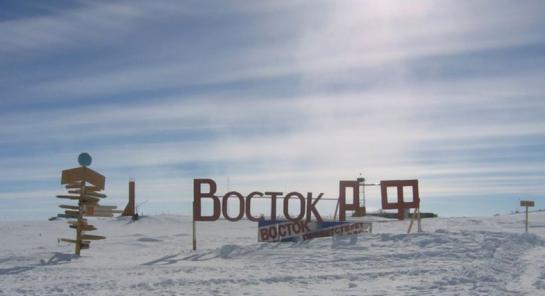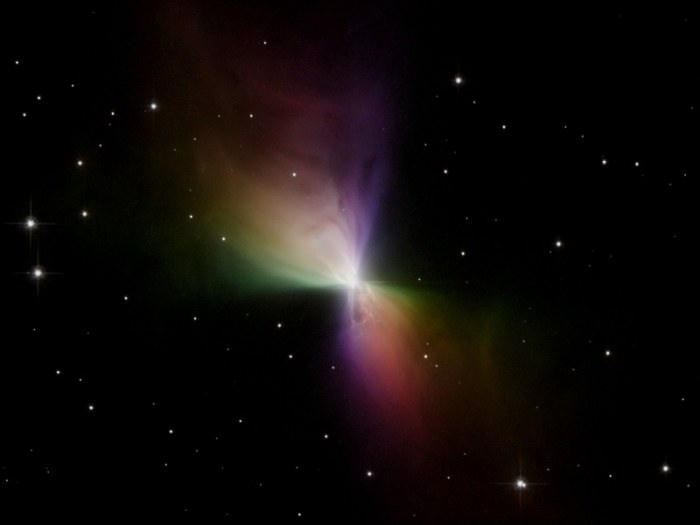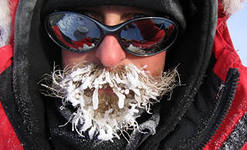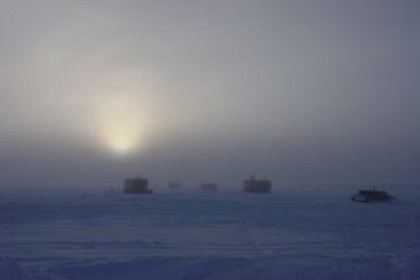V last years the climate has changed a lot, and not only towards warming. Such changes are especially noticeable in zones of a sharply continental climate. Here the summer is impossibly hot, the winter is very frosty. Let's look for answers to questions: where is the most low temperature on the ground? Where is the coldest?
Climate of the Northern Hemisphere in the 19th century
It would seem that the coldest should be the North and South poles, as the farthest from the equator. In fact, things are not so simple.
In the Northern Hemisphere, there are several settlements, which can rightfully be called "poles of cold". All of them are located in Russia. And this is not surprising, since it owns the largest part of the northern territories.
Long ago, in the 19th century, in one of these villages (Verkhoyansk), a critical temperature was recorded - 63.2 degrees below zero. It is located northeast of Yakutsk, 650 kilometers from it. In the same area in January 1885, an even greater minus mark of temperature was noted - 67.8 degrees. At that time, this is the lowest temperature on Earth.
Verkhoyansk at that time was a place of exile for political prisoners. The measurements were made, as is expected, at an equipped meteorological station by one of the political exiles, I.A.Khudyakov. In this regard, there is a monument in Verkhoyansk called "Pole of Cold". There is also a curious Ulus museum of local lore with the same name.
Frosts of the 20th century, modern times
In the middle of the 20th century, temperature measurements were made at Oymyakon, a village located just south (4 degrees) of Verkhoyansk. This was done by S. V. Obruchev (the son of the author of the works "The Land of Sannikov" and "Plutonium"). According to his data, it turned out that a minus mark of 71.2 degrees is possible here. And this at that time was the lowest temperature on Earth.
The Oymyakon depression is located above the Verkhoyansk depression in terms of level. In addition, it is surrounded by mountains that trap frosty and dry air in the depression. However, this temperature has not been observed in practice. And yet, Oymyakon became famous as the coldest place.
Oymyakon. Fight for the title of "Pole of Cold"
In fact, Obruchev made the calculations near another village - Tomtor, located 30 kilometers from Oymyakon. Since almost everything geographic objects of this region (plateau, depression, etc.) are called Oymyakon, therefore Oymyakon became so famous.
In Tomtor itself, already in February 1933, a temperature mark was recorded at the meteorological station - minus 67.7 degrees. That is, until the record for the lowest temperature on Earth (Verkhoyansk, 1885) is broken with a lag of 0.1 degrees. The residents of Tomtor themselves believe that the meteorological station was built later, when the climate began to warm. And so, most likely, they would have broken the record long ago.
According to average temperatures for 15 years in Verkhoyansk, the minimum temperature was only minus 57, and in Tomtor it was minus 60.0 degrees. And by absolute minimums for the same period of time the temperatures are as follows: Verkhoyansk - 61.1, and Tomtor - 64.6 degrees. It turns out that it is colder in Tomtor than in Verkhoyansk.
 Oymyakonskaya meteorological station, in connection with record data, is noted in the Guinness Book. But the Yakut authorities changed everything. They decided and recognized Verkhoyansk as the "pole of cold". Perhaps in order to attract more tourists.
Oymyakonskaya meteorological station, in connection with record data, is noted in the Guinness Book. But the Yakut authorities changed everything. They decided and recognized Verkhoyansk as the "pole of cold". Perhaps in order to attract more tourists.
Station "Vostok". The coldest temperature on Earth
The achievements of the aforementioned Verkhoyansk and Tomtor pale in comparison to the temperatures of the Vostok station located in East Antarctica. This is the most real Pole of Cold.
 This station is located at an altitude of almost 3.5 kilometers above sea level, on the very ice dome. It recorded the lowest temperature mark - minus 89.2 degrees. It is amazing! Even in summer, the temperature here is kept within the range - 20-40 degrees below zero! It is worth experiencing and seeing it in order to understand what real cold means.
This station is located at an altitude of almost 3.5 kilometers above sea level, on the very ice dome. It recorded the lowest temperature mark - minus 89.2 degrees. It is amazing! Even in summer, the temperature here is kept within the range - 20-40 degrees below zero! It is worth experiencing and seeing it in order to understand what real cold means.
East Antarctica has the lowest temperature on Earth.
Dashti Lut, Libyan Desert
The hottest air on Earth was recorded in 2005 in Libya in the Dashti Lut desert. The thermometer showed plus 70 degrees Celsius.
 At this temperature, you can cook food without using fire, since the surfaces of objects are so hot in the sun that you can safely fry eggs on them. And walking barefoot on the ground is impossible. The air even in the shade warms up to 60 degrees.
At this temperature, you can cook food without using fire, since the surfaces of objects are so hot in the sun that you can safely fry eggs on them. And walking barefoot on the ground is impossible. The air even in the shade warms up to 60 degrees.
There is another desert in Libya - El Aziziya. A positive temperature of 57.8 degrees was observed on it in September 1922.
There is Death Valley in the USA. The hottest temperature was recorded there at around 56.7 degrees. A average temperature summer is +47 degrees.
Universe. Coldest place
The lowest temperature in the Universe is in the Boomerang Nebula. It is believed that this is the coldest place in the entire universe. Minus 272 ° C its temperature. This is despite the fact that minus 273 ° C is taken as the lowest temperature - the lowest accepted limit of all temperatures.
 Where does this temperature come from? What's happening?
Where does this temperature come from? What's happening?
In the very center of this nebula is a dying star, which for 1500 years has been emitting gases in the form of winds moving at an incredibly huge speed of 500,000 kilometers per hour. The gas escaping from the nebula is cooled in the same way as the air that humans breathe out. The temperature of the gas itself is two degrees less than the temperature of the place where it then expands. Due to its rapid expansion, it cooled down to 272 Celsius.
This amazing nebula got its name due to the similarity in outward appearance with a boomerang, though, it is believed to look more like a butterfly. This is due to the fact that Australian scientists who discovered this place in 1980 did not have such powerful telescopes as they do now, and saw only individual fragments of the nebula. The modern Hubble telescope has taken the most accurate picture.
Thus, the places on Earth with the highest and lowest temperatures are, respectively, the Libyan Dashti-Lut Desert and East Antarctica. And there is still no limit to such natural phenomena.
We know that the lowest possible temperature is -273.15 ° C. At this temperature, the movement of particles stops, and the thermal energy released by them becomes equal to zero. Probably, there should also be such a point, above which the particles will no longer be able to emit more thermal energy, having reached their maximum.
Modern physics believes that this point is at the level of 1.41679 × 10 32 K (Kelvin) and is called the Planck temperature. This was the temperature of the Universe in the first fractions of seconds after the Big Bang.
How do Kelvin translate to Celsius?
In physics, it is convenient to measure temperature in Kelvin, which does not imply the presence of a negative temperature scale, that is absolute zero here is zero. To represent the temperature in the more familiar degrees Celsius, it is enough to know the formula by which the temperature in Kelvin is calculated. T K (temperature in Kelvin) = T C (temperature in Celsius) + T 0 (constant equal to 273.15). In other words, to convert Kelvin to Celsius, it is enough to subtract the number 273.15 from Kelvin. for example, 1000 K = 1000 - 273.15 = 726.85 ° C.
Given the formula for converting Kelvin to Celsius, we can represent the Planck temperature in Celsius as 1.41679 * 10 (32) -273.15 ° C. Of course, this estimate is calculated theoretically and is based on the fact that if the matter heated to the Planck temperature is given more energy, this will not lead to an increase in the speed of particles and, as a consequence, an increase in temperature. But it will cause the appearance of new particles during chaotic collisions of existing ones, which will lead to an increase in the mass of matter. But let's imagine that the matter heated to the Planck temperature still needs to be given more energy in order to try to heat it even more. In this case, the whole Universe is waiting ... and no one knows what awaits the Universe after passing the point of the Planck temperature. Probably, the gravitational interaction between particles of heated matter will become so strong that it will be equal to three other interactions: electromagnetic, strong and weak. Describe the physics of our world and none of the existing physical theory today can.
But let us return from cosmic affairs to earthly affairs. In his attempts to reach the maximum possible temperature within laboratories, a person set a temperature record of about 5.5 trillion Kelvin, which can be written as 5 * 10 12 K. Of course, scientists did not heat a piece of iron to this unthinkable temperature - there simply would not be enough energy for it ... This temperature was recorded during an experiment at the Large Hadron Collider during a collision of lead ions at near-light speeds.
If you find an error, please select a piece of text and press Ctrl + Enter.
What about the weather? And in + 50 ° C and -50 ° C, and even in a larger range, in principle, you can live. Air conditioners, fans and jackets will help us with this. Well, someone, of course, will die and nothing can be done about it, because we do not live in a terrarium.
What is the lowest air temperature recorded on Earth?
The lowest air temperature on Earth was recorded at the Soviet Antarctic station "Vostok" on July 21, 1983, when a platinum thermometer on the meteorological site showed -89.2 ° C. This is the lowest temperature in the history of meteorological observations.
The lowest temperature recorded in our country is -78 ° C. Incredible frost took place in the upper reaches of the Indigirka River.
The lowest air temperature in the inhabited areas of the planet was recorded in 1964 in Yakutia in the village of Oymyakon - -71.1 ° C. The entire interfluve of the upper reaches of the Yana and Indigirka rivers is considered to be the area of the cold pole of the Northern Hemisphere.
What is the warmest air temperature recorded on Earth?
The highest temperature on Earth recorded in Libya in 1922 is + 57.8 ° C.
The highest soil temperature was recorded at the Shurchi station in Uzbekistan. The temperature of irrigated light gray soils here reaches 79 ° C. At the Repetek station in Turkmenistan, the sand is heated to 77 ° C.
What is the maximum outdoor temperature a person can withstand?
For a short time, a person can be in dry air with very high temperature... A person can tolerate a temperature of 160 ° C. This was proved by the British physicists Blagden and Chantry, who conducted an experiment on themselves. A person can tolerate a temperature of 104 ° C for 26 minutes, 93 ° C for 33 minutes, 82 ° C for 49 minutes, and 71 ° C for 1 hour; it was established in the course of experiments with healthy human volunteers.
What is the minimum outside temperature that a person can withstand?
It depends on the state of his health and clothes, but most importantly - on the speed of the wind. In Yakutia in winter, people spend hours in the cold, with air temperatures below -50 ° C, but they are suitably dressed, and calmness is usually observed in the central part of the Siberian anticyclone. In Antarctica, winterers of continental stations also have to be outdoors for quite a long time, but there severe frosts are often accompanied by strong wind... Therefore, warm, windproof clothing is not enough there, and people are forced to wear a mask or cover their face with a hood of a fur jacket (“parkas”). The personnel of scientific stations in the Arctic and Antarctic, by the nature of their occupation, are forced to be systematically in the open air, sometimes wears electrically heated clothing, which is lighter than ordinary warm clothing, and is less bulky, less restricting movement. The minimum temperature at which people have been in the air for a short time is -88 ° C.
And two more facts
The maximum temperature of solid objects with which people can contact for a long time is about 50 degrees Celsius (at a higher temperature, a burn occurs).
At a constant body temperature of more than 42 ° C, a person dies.

Recently, scientists working in Antarctica recorded a temperature record - the lowest temperature for the entire period of meteorological observations.
The new record was minus 91.2 degrees. The previous record stood for thirty years. In 1983, in Antarctica, meteorologists recorded a temperature of minus 89.2 degrees. It should be noted that the 1983 record was recorded by Soviet Antarctic explorers at the Vostok station.
The last record set by nature was witnessed by Japanese polar explorers at the Kupol Fuji station and was confirmed by satellite data. Antarctica fully justifies the name of the "cold pole" - the coldest part of the Earth.

The North Pole in this regard is significantly inferior to the South Pole, where the temperature minimum reached only about minus 70 degrees.
The fact of the temperature record is somewhat out of touch with the theory of global warming of the earth. As long as there is abnormal heat in the northern hemisphere, Southern Hemisphere may suffer from abnormal cold snap. Scientists do not deny this fact.
The temperature record also thwarted the plans of one of the heir to the crown of Great Britain, Prince Harry, to reach the South Pole on foot. Due to weather conditions, the prince and his companions were forced to curtail the event. The prince was preparing for the journey in a freezer with a temperature of minus 35 degrees, and then minus ninety. They did not risk special royal blood.
at 10 trillion degrees Celsius was obtained artificially on Earth. An absolute record was set in Switzerland during an experiment at the Large Hadron Collider. Now guess - where in the universe was the lowest temperature recorded? Right! Also on Earth.In 2000, a group of Finnish scientists (from the laboratory of low temperatures at the Helsinki University of Technology), while studying magnetism and superconductivity in the rare metal Rhodium, managed to obtain a temperature of only 0.0000000001 degrees above absolute zero(see press release). It is currently the lowest temperature recorded on Earth and the lowest temperature in the Universe.
Note that absolute zero is the limit of all temperatures or -273.15… degrees Celsius. Such a low temperature (-273.15 ° C) is simply impossible to achieve.
Equipment to achieve record low temperatures
Equipment for reaching record low temperatures provides several successive stages of cooling. In the central part of the cryostat there is a refrigerator for reaching a temperature of 3 mK, and two atomic cooling stages using the method of adiabatic nuclear demagnetization.
The first atomic step is cooled to a temperature of 50 μK, while the second atomic step with a Rhodium sample made it possible to reach a record low negative temperature already in the Picokelvin range.
Second record for temperature drop was installed at the Massachusetts Institute of Technology. In 2003, super-cold sodium gas was obtained there.
Obtaining ultra-low temperatures, artificially, is outstanding achievement humanity. Research in this area is extremely important for studying the effect of superconductivity, the use of which (in turn) can trigger a real industrial revolution.
The lowest temperature in nature
The lowest temperature in nature
In nature, the lowest temperature was recorded in the Boomerang Nebula. This nebula is expanding and ejects cooled gas at a speed of 500,000 km / h. Due to the tremendous ejection rate, the gas molecules cooled down to -271 / -272 ° C.
For comparison. Usually, in open space, the temperature does not drop below -273 ° C.
The figure at -271 ° С is the lowest of the officially recorded natural temperatures. And this means that the Boomerang nebula is colder than even the relic radiation from the Big Bang.

The Boomerang Nebula is located relatively close to Earth, only 5,000 light years away. In the center of the nebula is a dying star, which was once, like our Sun, a yellow dwarf. It then turned into a red giant, exploded and ended its life as a white dwarf with a hypercold protoplanetary nebula around it.
The Boomerang Nebula was photographed in detail by the Hubble Space Telescope in 1998. In 1995, using ESO's 15-meter submillimeter telescope in Chile, astronomers found it to be the coldest place in the universe.
The lowest temperature on earth
The coldest temperature on Earth
The lowest natural temperature on Earth, -89.2 ° C, was recorded in 1983 in Antarctica at Vostok Station. This is an officially registered record.
Scientists have recently made new measurements from a satellite in the area of the Japanese Fuji Dome station. A new record figure for the lowest temperature on the Earth's surface -91.2 ° C has been obtained. However, this record is now contested.
At the same time, the village of Oymyakon in Yakutia reserves the right to be considered the cold pole on our planet. In Oymyakon in 1938, an air temperature of -77.8 ° C was recorded. And although a significantly lower temperature (-89.2 ° С) was recorded at Vostok station in Antarctica, this achievement cannot be considered a record low, since Vostok station is located at an altitude of 3488 meters above sea level.
To compare the results of various meteorological observations, they must be reduced to sea level. It is known that rising above sea level lowers temperatures significantly. In this case, the lowest air temperature recorded on Earth turns out to be in Oymyakon.




